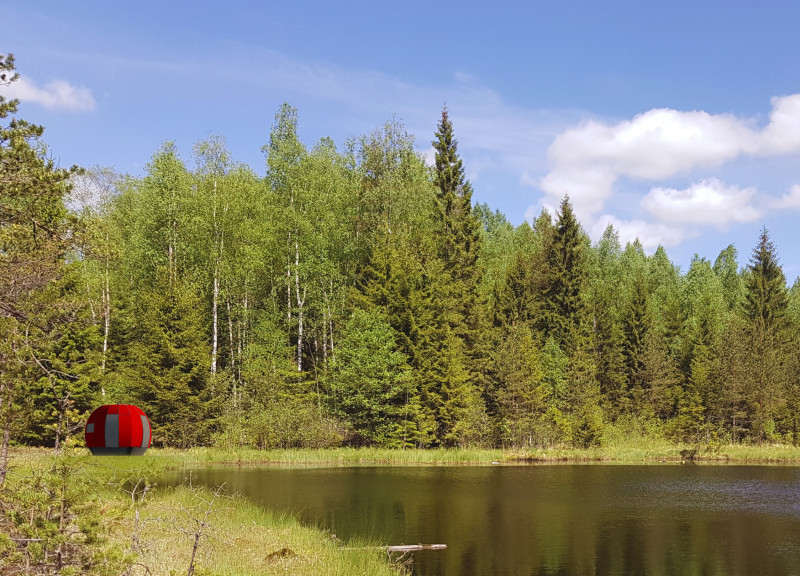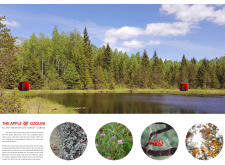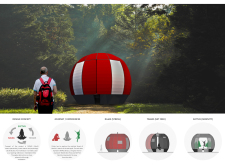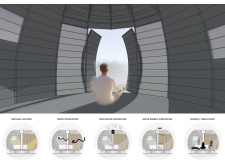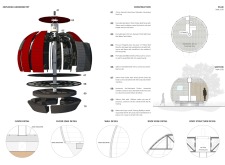5 key facts about this project
At its core, the project operates with a clear function, which revolves around [insert specific function such as mixed-use, community gathering, educational purpose, etc.], making it a vital addition to the urban landscape. This function informs the spatial organization within the building, where each area is carefully delineated yet harmoniously connected to promote both privacy and collaboration among users. The arrangement of spaces reflects a modern architectural approach, emphasizing openness while providing intimate zones that invite users to engage with their surroundings.
The design is characterized by a careful selection of materials that not only uphold structural integrity but also pay homage to the local context. Materials such as concrete form the backbone of the project, providing durability and strength, while wood accents introduce warmth and natural texture. The extensive use of glass facilitates a seamless connection between the interior and exterior, enhancing natural light penetration and offering views of the surrounding landscape. Steel elements contribute to the modernity of the structure, demonstrating a balance between robust construction and aesthetic elegance. Incorporating bricks into the façade creates a visual dialogue with the area’s architectural heritage, grounding the new design in its cultural context.
Unique design approaches are evident throughout the project, particularly regarding its sustainability initiatives. By integrating green roofs, the architecture not only improves insulation but also contributes to biodiversity in urban settings. The consideration of rainwater harvesting systems and photovoltaic panels reflects a commitment to reducing the environmental footprint, allowing the building to operate efficiently while maximizing its natural resources. Additionally, strategies for natural ventilation are implemented, minimizing the reliance on mechanical systems and enhancing indoor air quality.
The aesthetic quality of the project extends beyond mere visual appeal; it serves as a narrative device that tells the story of its community. The structure’s façade is articulated with thoughtful detailing, utilizing textures that invite curiosity while reinforcing the overall design vision. This careful attention to detail reveals itself throughout the building, from the welcoming entryway that encourages pedestrian engagement to the thoughtfully designed communal spaces that facilitate interaction.
What truly sets this project apart is its emphasis on community involvement during the design process. By considering the voices of local stakeholders, the architecture resonates on a deeper level, reinforcing social connections and creating a space that belongs to its users. The preservation of the area's unique identity is paramount, as the design thoughtfully navigates the balance between innovation and respect for the historical narrative.
In summary, this architectural endeavor stands as a testament to the potential for modern designs to harmonize with their surroundings while addressing contemporary needs. Its careful consideration of form, function, materiality, and sustainability demonstrates an effective architectural response to the challenges of today’s built environment. For those interested in exploring the nuances of this project further, reviewing the architectural plans, sections, and designs will provide deeper insights into the innovative ideas that shaped this compelling architectural story.


